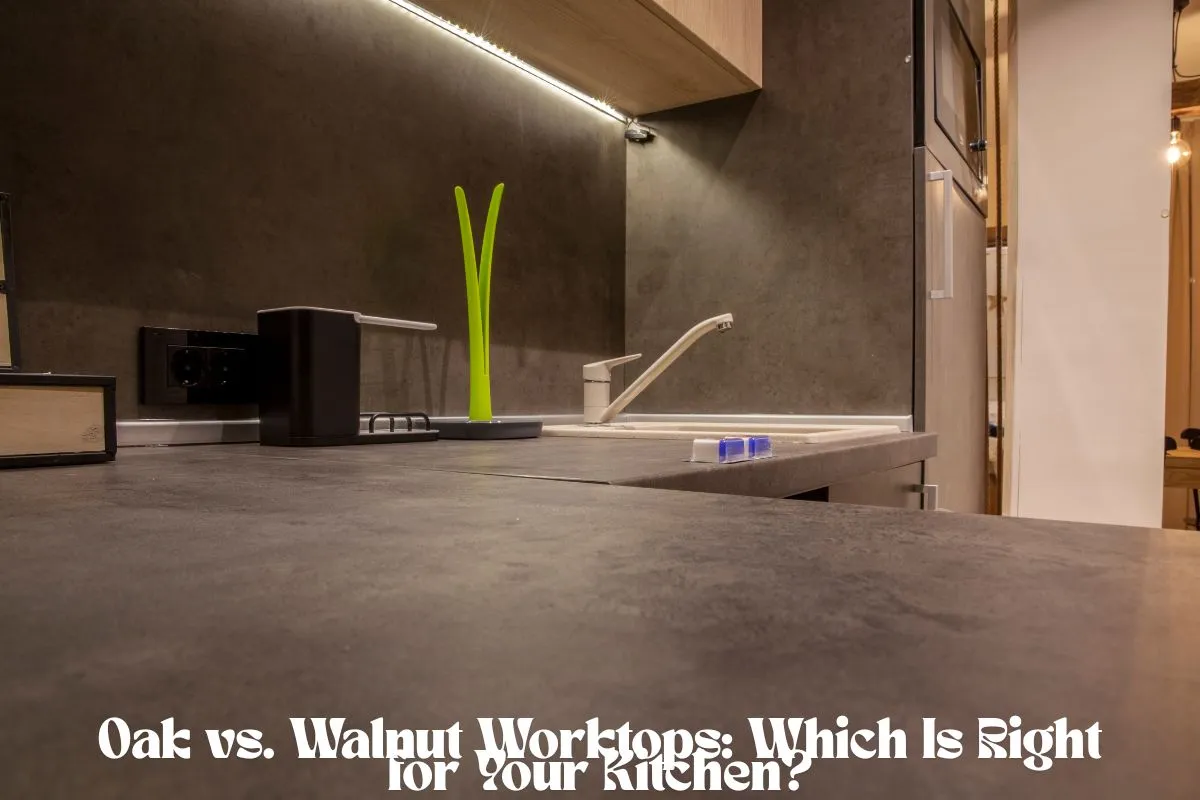Choosing the right wooden worktop can completely transform your kitchen’s look, feel, and functionality. Among the most popular choices are oak worktops and walnut worktops. Both are known for their beauty and durability, but each offers unique characteristics that may suit different kitchen styles and personal preferences.
In this guide, we’ll explore the oak vs. walnut worktop comparison in-depth and help you decide which one is the perfect match for your home.
Understanding Oak Worktops: A Classic Choice
Oak worktops are loved for their natural wood grain, warm golden tones, and solid build. This durable wood surface is ideal for homeowners seeking a timeless kitchen design that can handle everyday wear and tear.
Pros of Oak Worktops:
-
Warm, rustic oak finish that pairs well with traditional kitchens
-
Very durable and can withstand frequent use
-
More affordable than walnut
-
Sustainable wood option (when sourced responsibly)
-
Accepts various stains and oils for customized looks
Cons of Oak Worktops:
-
Requires regular maintenance
-
Slightly softer than walnut, so more prone to dents if not treated
-
Can darken over time with exposure to sunlight
If you’re looking for a long-lasting worktop that offers home renovation value, oak is a solid choice. It’s especially popular in country kitchens or traditional kitchen aesthetics.
Exploring Walnut Worktops: Rich and Elegant
Walnut worktops, particularly American Black Walnut, are renowned for their rich, dark hues and smooth textures. They bring a touch of luxury and elegance to contemporary kitchen designs.
Pros of Walnut Worktops:
-
Luxurious walnut appearance that makes a strong design statement
-
Natural resistance to water damage
-
Dense and hardwood – very durable
-
Ages gracefully with a beautiful patina
Cons of Walnut Worktops:
-
Typically more expensive than oak
-
May show scratches more easily due to dark surface
-
Can be harder to source sustainably
If your kitchen features modern cabinets, bold fixtures, or a custom worktop style, walnut adds the perfect finishing touch. Its dark wood tones create stunning contrast with white or light-coloured interiors.
Key Differences: Oak vs. Walnut Wood Durability
When comparing oak vs. walnut durability, both are solid wood kitchen worktops, but walnut is generally harder and denser. That means it resists dents and scratches slightly better, though both require proper maintenance.
However, oak worktops are no less tough. With regular oiling, they can last decades. Many homeowners love the slightly weathered look that oak develops over time, especially in rustic kitchen settings.
Cost Considerations: Oak Worktop Cost vs. Walnut
Budget is often a deciding factor. In the oak worktop cost vs walnut worktop price debate, oak wins in terms of affordability. Walnut is more premium due to its availability and processing requirements.
So if you want a wooden kitchen surface that looks great without breaking the bank, oak worktops are your best bet. But if your budget allows and you desire that high-end designer feel, walnut kitchen countertop ideas may win you over.
Style and Colour: Dark vs Light Worktops
The contrast between dark vs light worktops is another important factor. Oak, with its warm kitchen tones, works well in homes that lean toward traditional or Scandinavian styles. On the other hand, walnut offers darker tones that pair beautifully with white or grey cabinets, giving your space a luxurious feel.
Consider your existing colour palette and lighting. A walnut worktop may feel too heavy in a dark kitchen, while an oak worktop could feel too light if you’re aiming for drama and contrast.
Maintenance Needs: Oak and Walnut Worktop Care
Both types of wood require regular worktop maintenance to look their best. Here’s how to care for each:
-
Oak Worktop Maintenance: Use Danish oil or linseed oil every few months to prevent drying and cracking. Clean with a soft cloth and mild soap. Avoid harsh chemicals.
-
Walnut Worktop Care: Requires slightly less oiling due to its dense grain. Keep it dry, and re-oil every 4–6 months. Avoid standing water or acidic spills.
Using the best wood for kitchen countertops means committing to some upkeep, but the result is a kitchen surface that stays beautiful and functional for years.
Sustainability and Sourcing
Today’s homeowners care about sustainability. Sustainable wood options like FSC-certified oak and walnut ensure that your choice is eco-conscious. Oak is more commonly sourced locally (especially in Europe), while walnut—particularly American Black Walnut—may come from farther afield.
Ask your supplier about the source of the timber and its environmental impact.
Which One Is Right for You?
Here’s a quick breakdown to help you choose:
| Feature | Oak Worktop | Walnut Worktop |
|---|---|---|
| Color | Warm golden brown | Rich chocolate brown |
| Style | Traditional, rustic | Modern, luxurious |
| Cost | More affordable | More expensive |
| Durability | Excellent | Superior |
| Maintenance | Moderate | Slightly less frequent |
| Grain Pattern | Open, textured | Smooth, fine-grain |
| Availability | Widely available | Premium, less common |
If you love a natural, warm look with a rustic oak finish, go for oak. It’s practical, beautiful, and works with many design styles.
If you’re after a statement kitchen with dark, rich tones and a contemporary edge, walnut is a standout.
Expert Tips and Final Thoughts
Here are a few expert tips to help you decide:
-
“Oak worktops are a favourite in home renovation ideas due to their affordability and charm,” says a local interior designer.
-
“Walnut worktops make a strong first impression. They’re perfect for kitchen design trends that embrace contrast and elegance,” shares a kitchen stylist.
-
“Whatever your choice, a long-lasting worktop comes down to regular care,” adds a wood specialist.
Conclusion: Personalize Your Kitchen with Confidence
Whether you choose an oak worktop for its natural warmth or a walnut worktop for its modern elegance, you’re making a smart investment in your home. Each offers distinct advantages, both in appearance and performance.
Think about your kitchen style, budget, and how much maintenance you’re comfortable with. Then, let your worktop reflect your personal taste and lifestyle.
With proper care, your wooden kitchen surface will serve your family for years—and turn heads while doing so.










